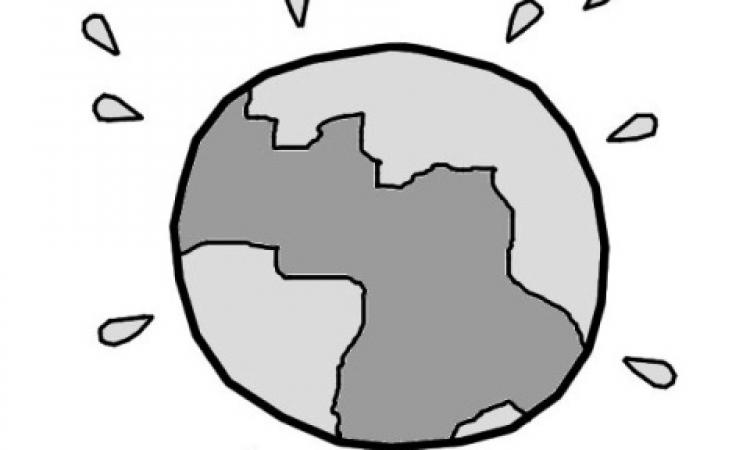
Four years ago, the international community at the Durban climate summit agreed to establish an international binding climate agreement as the current Kyoto protocol is set to expire in 2020. Closer to the Paris summit, countries were to prepare a post-2020 action plan on climate change mitigation and adaptation. These plans were called ‘Intended Nationally Determined Contributions' (INDCs). Not only were countries to determine their action plans per their existing capacities and domestic priorities but also developing nations were to use the opportunity to state their expectations in terms of technological aid and financial assistance.
India not on par with developed and emerging nations
India submitted its INDCs six months after the deadline of March 2015. India’s INDCs--like previous government statements--reiterate the objective of establishing a cooperative and equitable global architecture based on climate justice and the legal principle of ‘common but differentiated responsibility’ formalised in the 1992 Rio Earth Summit. India makes the case for why it should not be treated at par with developed and other emerging economies by detailing the developmental deficits and widespread disparities its people face in access to basic needs.
One fourth of India’s population does not have access to electricity and around 100 million people do not have access to safe drinking water. With urbanisation proceeding at an exponential pace, the demand for water and power will increase exponentially even as the stress on resources will amplify. To overcome current and future developmental challenges, India seeks a global collaborative effort.
In continuity with past voluntary commitments towards mitigation, India has declared that the emission intensity of GDP would be reduced to 33% by 2030, thanks to the transition to renewable energy especially solar and nuclear. The government has set an ambitious target for energy composition in that renewable energy components would be increased to 40% from the current meagre 13% in another decade and a half. Another major pledge is to increase the forest cover to 33% by 2030 thus providing a carbon sink to absorb nearly 3 billion tonnes of carbon dioxide.
How has 'water' been treated in the INDCs?
Recognising the impact of climate change on the water cycle, India has placed more emphasis on adaptation to the changes already underway. Accordingly, India will increase its investments for water management. Schemes such as Neeranchal and Pradhan Mantri Krishi Sinchayi Yojana besides Ganga rejuvenation have been included under adaptation strategies. Though groundwater depletion is acknowledged as a serious issue, no strategy other than rainwater harvesting has been outlined. Interestingly, the much maligned MGNREGS is included as a major adaptation strategy by the government for improving livelihoods in vulnerable geographies through watershed development. To understand the Himalayan ecosystem better, a national mission on Himalayan studies will be launched soon to build knowledge and a repository of replicable solutions towards natural resource management.
The government has also showcased the National Water Mission which has the objective of increasing efficiency by 20%. The reality however is that the budgetary allocation for the year 2015-16 was slashed by half to a meagre Rs 20 crore. Besides, the government’s message about adaptation contradicts with its mitigation strategy of generating 100 GW of energy from mega hydro projects. Urban programs such as AMRUT, Smart Cities Mission and Swachh Bharat Mission have been included under mitigation though these were not designed from the beginning with linkages to climate change.
Developed versus developing: How will the financial burden be shared?
Over the next two decades, the financial resources required for India’s mitigation and adaptation would be about USD 2.5 trillion. India presses the need for finances and technology transfer from the developed world. It also makes it clear that its actions would be voluntary and strictly not subject to any form of monitoring, reporting and verification (MRV) mechanism. This hard stance will be tested in Paris as the United States, Japan, Australia and other developed nations are opposed to emerging economies not having to undertake binding commitments. Despite criticisms of inadequacies, India’s INDC fares better than those of the developed world whose commitments are far less ambitious. Realisation of these commitments and end goals will depend on how the statements of good intent translate into processes and practices; stress on expediting green clearances and clamour for economic growth at any cost do not indicate a real shift in India’s approach.
At the time of writing, the politics of climate change is underway in Bonn where the US and EU are attempting to reduce their already low commitments and thus shying away from their historic responsibilities. Developed countries are also pressurising emerging economies including China and India to share the financial burden after 2020. It is unclear at the moment whether the world will have a credible post-Kyoto agreement that addresses inter and intra generational equity. Much will depend on collective political will. In the absence of a meaningful post-Kyoto climate agreement, the Sustainable Development Goals agreed to in September will be hard to achieve as both are complementary.
Download the report.
Sundar M Senthilnathan is Manager - Research at Arghyam, a grant making foundation with a focus on groundwater and sanitation.